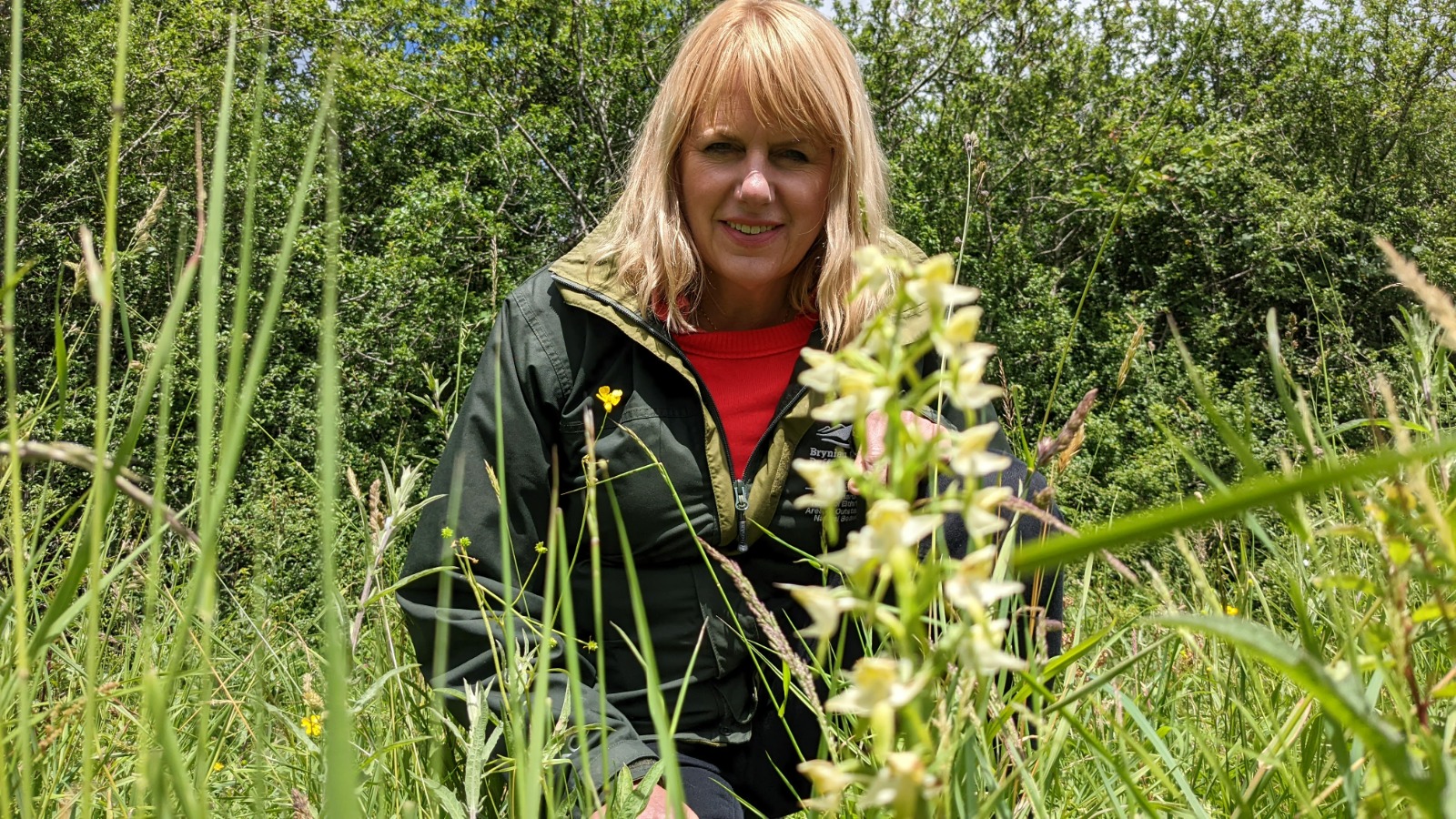
Whether you were buzzing about World Bee Day or you’ve taken the plunge and extended No Mow May, this time of year focuses on celebrating and learning about biodiversity. Since being elected to the Senedd just over a year ago, I have been impressed by the level of understanding on this issue amongst my colleagues.
The roots of my interest in nature go all the way back to my childhood. I used to power up a steep lane in my village thinking that once I got to the top, there would be an amazing view for me to enjoy. If a child does not connect with nature before the age of 12, they are much less likely to as an adult. Nowadays, I wander up that hill slowly, marvelling at the variety of natural life in the species-rich hedgerows and banks that I am surrounded by.
After I was made Flintshire County Council’s biodiversity champion and attended some presentations and workshops, I started to actively look out for species and I developed an eye for spotting them in the verges. I noticed wild strawberries, orchids, honeysuckle, stitchwort, wild garlic, butterflies, bees and bats!
I discovered singing hedges full of sparrows, crows fighting with buzzards, otter spraints and snakes. I noticed that there was a whole world of active nature going on outside the bubble of everyday human life in which I was living. Today, I am proud to say that I am now a species champion for butterfly orchids.
Nature is beautiful. And we cannot survive without it. Our natural environment is in serious decline and therefore so are all the wonderous benefits which it delivers. It has served humanity well and now we need to nurture it to help it thrive once again.
For centuries, here in Wales, we were familiar with the annual movement from hafod to hendref, where farmers would travel with their cattle or flock to higher elevations and back in the winter months. Not only would this naturally provide a richer diversity of sustenance for livestock, but it would change the makeup of the fields they travelled to create dense, rich grassland meadows.
Across the UK, we see Drovers Roads and Longacres; miles of widened paths which were used to drive livestock to trading sites. These were our original roadside verges; massive swathes of meadowland, all grazed by travelling farmers, all controlled by commoners. These ancient roadways, one of the earliest natural inventions of humans, unknowingly became some of our richest and densest sites of protected biodiversity.
Biodiversity as a Weapon in the Fight against Climate Change
Biodiversity is an essential underpinning element of all resilient ecosystems and is fundamental to our economic, social and cultural wellbeing.
But today, we are in a nature emergency. Our wildlife is declining globally at rates unprecedented in human history. We have no choice but to act now in order to save it. One in six species assessed in Wales alone are at risk of extinction — a truly extraordinary and upsetting statistic.
Much of our focus for carbon storage is targeted at tree planting, yet three to five times more carbon is stored within our grasslands than is in our forests. Rural grass verges make up more than 50% of our rich meadowland in the UK. 97% of traditional lowland grassland meadows in Wales and England were lost between 1930 and 1987. We urgently need protections in place to stop this happening today and in the future.
Road verges and parks may be the only regular contact some people in Wales have with nature, particularly those who live in cities or in towns blighted by overdevelopment. We need to allow more native areas to stay wild — this will not only protect the environment, but enhance local character, visual interest as well as improve health and wellbeing.
We should create wildlife corridors via wild patches, natural growth areas and focusing on only cutting desirable footpaths were needed. This will help combat the nature and climate emergencies by supporting our wildlife, enhancing ecological connectivity as well as storing more carbon in our soils and building resilience.
We can make road verges and amenity grasslands (parks and other open green spaces) more wildlife friendly. Regularly cut, closely mown grass may look tidy to some, but it has little benefit for wildlife or humanity. We need to take a step back from our expectation of manicured grass, weeded to boredom and poisoned to bare earth. We need to allow all possible meadows to reach their full potential — let the flowers grow!
Great work is already being carried out by local authorities and Local Nature Partnerships across Wales, highlighted by the strength of the No Mow May campaign, the Magnificent Meadows Cymru partnership projects and the Road Verge management guidelines. At a Welsh Government level, I have been actively lobbying for policy inclusions in the new Sustainable Farming Scheme and I hope that, once finalised, it will offer the right incentives to encourage the protection of our environment.
These are some of the actions we should be taking to cultivate a fertile future; one in which our biodiversity is allowed to bloom. Although pastoralism is no longer the main mechanism of raising livestock since the Enclosure Acts allowed Lords to create private land rather than commons, we can look to these more traditional methods to show us how we can protect our future biodiversity and create a mechanism for change that develops alongside and with nature.
Our children and grandchildren should be able to experience discovering the wonders of the natural world surrounding them here in Wales. It is our duty to provide every possible opportunity for them to do that by protecting what we have left, before it’s too late.
- This article was originally written for and published by Welsh Fabians: https://fabianscymru.medium.com/biodiversity-the-big-picture-seeding-the-future-25c68f9ba6bf

